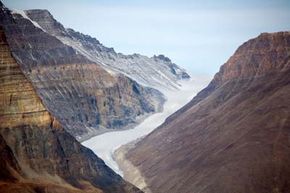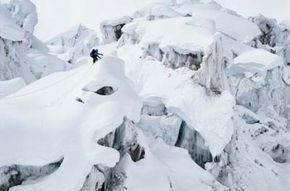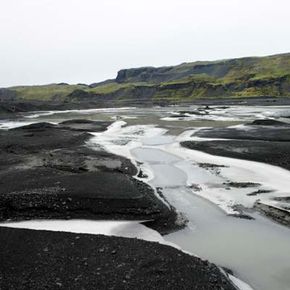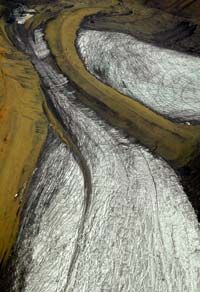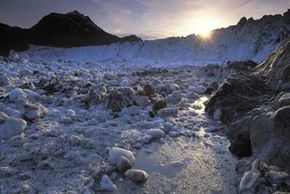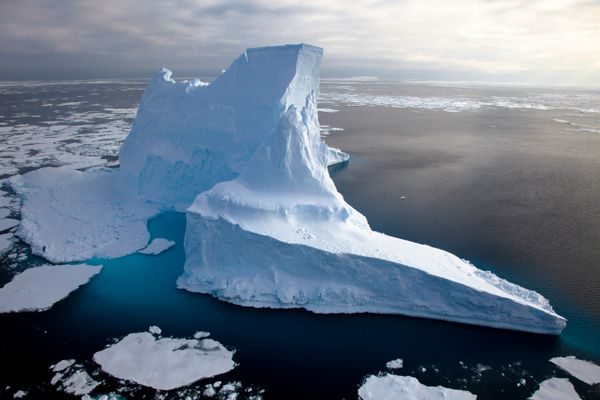Glaciers don't pass through the land quietly. Here are some other geologic signs that a glacier's stopped by:
Striations
As the glacier carries rocks, those rocks scrape against the bedrock below. This causes long gouges in the bedrock. If the carried rock "skips" along the bedrock, then the intermittent gouges are called chatter marks.
Moraines
Picture a glacier as a plow moving through loose soil. The soil piles up on the sides of the plow and in front of it. When you remove the plow, small ridges of soil are left. Moraines are these ridges made up from rock debris carried by the glacier.
Lateral moraines form from debris that falls off the sides of the glacier. Terminal moraines form at the end of the glacier, and can be used to determine the farthest extent of the glacier in the past.
Sheepbacks
Glacier movement can create these asymmetrical rock formations and hills. The glacier wears down the rocks gradually, forming one smooth, sloped side, but pulls rocks away from the other side as it passes over, forming a sharper, more jagged slope.
These formations can be used to determine the direction of glacier movement. People once thought these looked like the backs of sheep, so they called them "roche moutonnée," which is French for "sheep back."
Drumlins
Drumlins are shaped sort of like sheepbacks, except they're larger and face the opposite direction. Geologists aren't totally sure how they form. They may be similar to the ripples found in sand on the beach as water flows over it. No one is sure if they form by action of the glacier itself, or a flood that occurs as the glacier melts.
There are also horns and arêtes, which are formations of very steep rock. They form when multiple glaciers come together, carving out the rock in different areas and leaving spires of rock or steep ridges behind. Sometimes the weight of a glacier makes a part of the bedrock beneath it collapse, forming a basin known as a cirque. If the glacier melts, the cirque might become a lake.
Creators of Lakes
Most geologic effects of glaciation take place over thousands of years, but not all of them. A Jökulhlaup is a sudden, devastating flood that happens when a glacial lake is suddenly released. The term comes from Iceland — a place that has both volcanoes and glaciers in abundance — and originally referred to a sudden release of water by volcanic eruption.
Meltwater builds up behind some portions of glaciers, sometimes filling in to create lakes. Or, the glacier might advance across a river, damming the river and creating a lake that way. When a volcano erupts under a glacier, it might destroy an ice dam or release enormous volumes of meltwater by heat alone.
Other ice dams are destroyed by erosion, or because the lake behind them gets so high that the dam floats. Geologists use Jökulhlaup to describe all these catastrophic glacial floods, not just volcanic ones.
Near the borders of the states of Washington, Idaho and Oregon sits Glacial Lake Missoula. Geologists have determined that during past ice ages, ice dams created a lake holding over 500 cubic miles (2,084 km) of water [source: USGS]. That's about half the volume of Lake Michigan [source: IN.gov].
The ice dam eventually floated and broke apart, releasing all that water at once. The resulting deluge was probably one of the most massive floods in Earth's history. It happened several times, as the glacier crept back across the river and formed a new dam, only to break apart once the water level behind it got high enough.

